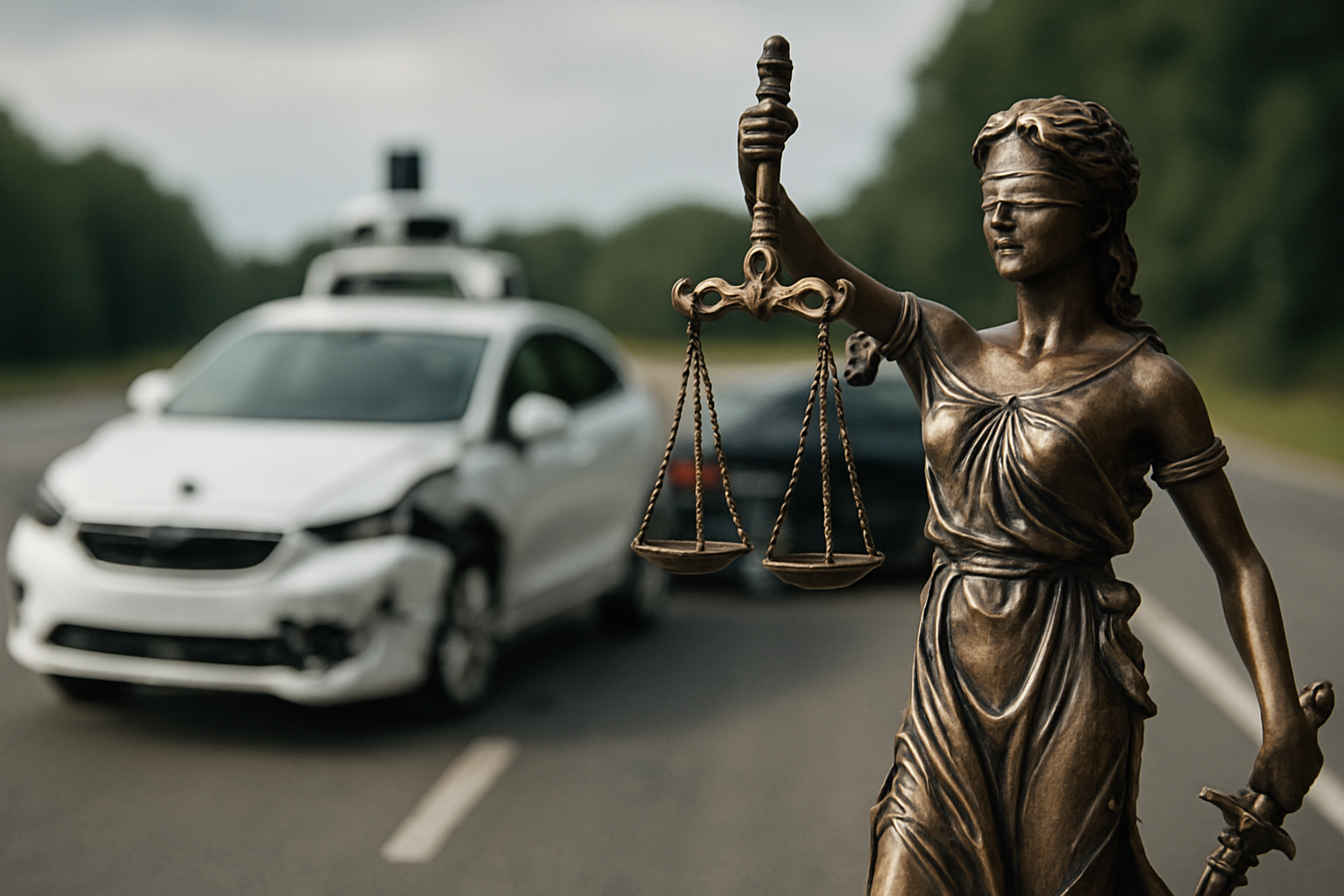Navigating the Legal Maze of Autonomous Vehicle Regulation
Introduction: In an era where technology is rapidly reshaping our world, the advent of autonomous vehicles presents a unique challenge to lawmakers and regulators. As these self-driving marvels inch closer to widespread adoption, legal frameworks struggle to keep pace. This article delves into the complex landscape of autonomous vehicle regulation, exploring the intricate balance between innovation and public safety.

Liability Conundrums in a Driverless World
One of the most pressing legal questions surrounding autonomous vehicles is the issue of liability. In traditional auto accidents, determining fault often hinges on driver behavior. However, in a world of self-driving cars, the lines blur. Should liability fall on the vehicle manufacturer, the software developer, or the owner? Some jurisdictions are exploring novel concepts like treating autonomous vehicles as legal entities, similar to corporations, capable of bearing responsibility for accidents.
Data Privacy and Cybersecurity Concerns
Autonomous vehicles are essentially computers on wheels, collecting vast amounts of data about their surroundings and passengers. This raises significant privacy concerns. Legislators are grappling with questions of data ownership, storage, and usage. Additionally, the potential for hacking and cyber attacks on these vehicles presents a new frontier in transportation security. Regulatory bodies are working to establish standards for cybersecurity in autonomous vehicles, but the rapidly evolving nature of technology makes this a moving target.
The Ethical Dilemmas of Algorithmic Decision-Making
Perhaps one of the most philosophically challenging aspects of autonomous vehicle regulation is addressing the ethical decisions these vehicles may need to make. How should a car be programmed to respond in a situation where harm is unavoidable? Should it prioritize the safety of its passengers over pedestrians? These ethical quandaries are pushing lawmakers to consider not just the legal, but also the moral implications of autonomous vehicle algorithms.
International Harmonization of Autonomous Vehicle Laws
As autonomous vehicles cross borders, the need for international harmonization of laws becomes apparent. Different countries have varying approaches to regulation, creating potential roadblocks for global deployment. Efforts are underway through organizations like the United Nations Economic Commission for Europe to establish international standards. However, achieving consensus among nations with diverse legal systems and cultural attitudes towards AI and automation remains a significant challenge.
The Role of Insurance in the Autonomous Era
The insurance industry is bracing for a seismic shift with the advent of autonomous vehicles. Traditional auto insurance models based on driver risk may become obsolete. Some jurisdictions are exploring mandated manufacturer insurance for autonomous vehicles, while others are considering no-fault systems. The legal framework for insurance in this new paradigm is still evolving, with potential implications for personal injury law and product liability.
Balancing Innovation and Regulation
Lawmakers face a delicate balancing act between fostering innovation and ensuring public safety. Overly restrictive regulations could stifle technological progress, while a lack of oversight could lead to dangerous situations on public roads. Some jurisdictions are experimenting with regulatory sandboxes, allowing companies to test autonomous vehicles under controlled conditions with regulatory exemptions. This approach aims to provide valuable real-world data to inform future legislation.
The Future of Autonomous Vehicle Law
As autonomous vehicle technology continues to advance, legal frameworks will need to evolve in tandem. Experts anticipate a shift towards more uniform federal regulations in countries like the United States, potentially preempting the current patchwork of state laws. Internationally, efforts towards harmonization are likely to intensify. The legal landscape will need to address not just passenger vehicles, but also the integration of autonomous technology in public transportation, logistics, and even air and sea transport.
In conclusion, the regulation of autonomous vehicles represents one of the most dynamic and challenging areas of contemporary law. It requires a delicate balance of technological understanding, ethical considerations, and legal expertise. As these vehicles transition from novelty to necessity, the legal frameworks governing them will play a crucial role in shaping the future of transportation and urban planning. The coming years will be critical in establishing precedents and principles that will guide the autonomous revolution for decades to come.





